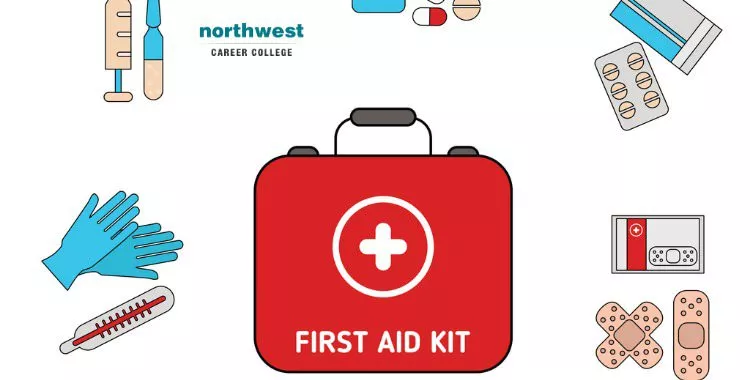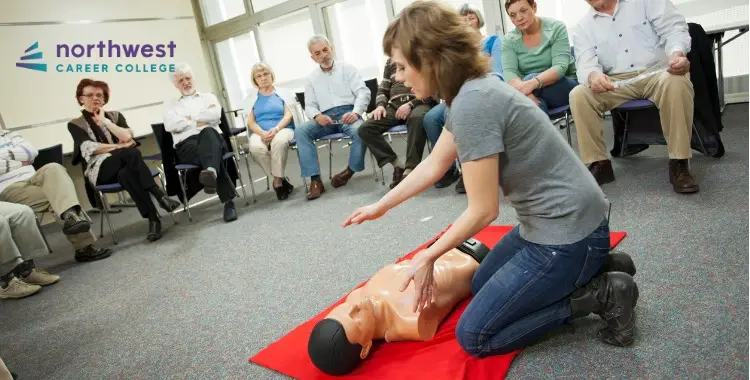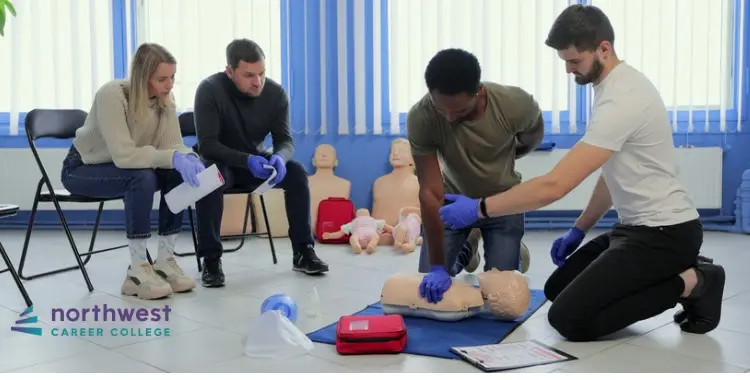First Aid Tips for Cold Weather
- CPR
- March 11, 2024
- 3.0k views
- 5 min read

There’s that old familiar chill in the air, which can only mean one thing: It’s officially the season of slips and spills, sniffles and sneezing! With snow and ice officially in the forecasts and a blizzard in Buffalo, New York, that buried them under around ten feet of snow, it’s time to start thinking about how to prepare and inform ourselves so that we can stay safe throughout the cold winter months.
With the ground getting icy and slick, falls, sprains, sore backsides, and broken-bone injuries increase dramatically during this time of year. Additionally, with the dip in temperatures, there is the added risk of hypothermia, and the lower temperatures means our bodies work harder to keep warm and fight off illnesses. This means our immune system may go down, making us more susceptible to illnesses like colds and the flu. Let’s go over some basic cold-weather first aid tips:
Know More: How Does CPR Work?
Table of Contents
First Aid Tips for Cold Weather
How to Splint a Broken Bone?
Slips and spills are common during the icy winter months. Most of the time, all that we have is a little soreness in our rump and a little wound to our own ego, but sometimes, winter falls can leave us with severe sprains or even broken bones. In case a family member falls and breaks a bone, here’s what you can do to help stabilize the injury:
● Call 911, especially if the injury is severe and especially if the victim is unconscious or unresponsive.
● If there is any bleeding from the fracture site, hold a clean (preferably sterile) cloth to the wound area to try and stop the bleeding.
● Immobilize the injured area, but do not ask the person to move the fractured limb, and do not try to reset the bone unless circulation is cut off (look for bluish tinges to extremities, and touch the area and ask the person to tell you if they felt your touch to check for circulation issues).
● Use ice packs, if available, to numb pain and reduce swelling.
● To create a splint, get something rigid, like a rolled-up newspaper, magazine, or even boards or sticks, to create a skeleton for the splint.
● Extend the splint beyond the injured area. For instance, if the ankle is fractured, splint
the whole foot and lower leg.
● Tie the splint up securely with whatever you have: Cloth, rope, belts, ties, or even tape is fine. Make sure that it is secure enough that the splint doesn’t move but not so tight that it cuts off circulation.
● Ask the patient if having the splint makes the injury more painful, and check for signs of loss of circulation while also keeping an eye on the patient for signs of shock.
How to Treat Hypothermia?
Hypothermia occurs when someone is exposed to extreme cold or chill due to extended exposure outdoors, especially when wet. Certain individuals, like the elderly, infants, and those engaging in winter sports outdoors, are more susceptible to hypothermia. Keep an eye on higher risk individuals when outdoors, and always make sure to dress well for the elements.
● Identify the signs of hypothermia, which include shivering (though in extreme cases of hypothermia, shivering will stop), confusion, and exhaustion/drowsiness; in infants, look for bright red skin and low energy.
● As soon as you can, get the victim to a warm area and out of any wet garments. To prevent further heat loss, keep them from lying on the cold ground by placing a barrier between them and the ground. Also, be sure to keep them out of the wind (use your own body as a shield if necessary).
● Take the victim’s temperature if you can. If it’s below 95 degrees Fahrenheit, it is an emergency and you need to call emergency services right away.
● Warm the victim, but do not massage them, as this can cause further cardiovascular problems. Focus instead on warming the center of the body, like the neck, head, chest, and groin areas.
● Use an electric blanket or even skin-to-skin contact between loose clothes or sheets. Do not grab hot towels; instead, the temperature of the items should be warm, not hot. Do not massage arms and legs, as this can push cold blood toward the center of the body and make the situation worse. Give them non-alcoholic warm drinks, like coffee, tea, and hot chocolate.
● Once body temperature has increased, completely wrap them (leaving the face exposed) in a warm blanket and monitor them until emergency services arrive.
How to Know When a Cold or a Flu Has Gone on Too Long?
Sniffles and sneezing may seem innocent enough, but if you or a loved one comes down with the flu or a cold that lingers or worsens, it could be developing into pneumonia and should be looked at immediately by a doctor. Certain people are more susceptible to complications related to the flu and colds. Those people include the elderly, infants, young children, and pregnant women. Signs that you need to get to a doctor immediately include:
● Difficulty breathing
● Skin appears bluish or grey
● A lasting fever that does not come down with medications
● Pain or pressure in the abdomen.
● Sudden dizziness or confusion
● Dehydration
● Severe or persistent vomiting
● Seizures
● In infants, low energy, loss of appetite, or irritability
Learn To Save Lives
Here at Northwest Career College, we are committed to providing affordable, quality CPR classes to the Las Vegas community. We pride ourselves on being an American Heart Association (AHA) testing center and we offer Las Vegas CPR classes designed to fit your personal needs and professional schedule. As part of our “student-focused” approach to education we also offer our CPR classes free of charge to all of our students. Call us today at (702) 403-1592 to book your CPR class and become qualified to save a life in just 4 hours!



